The Birthplace of the Civil Rights Movement
- Nate and Lori
- Mar 27, 2018
- 9 min read

“If a law is unjust, a man is not only right to disobey it, he is obligated to do so”
Thomas Jefferson
State 32: Alabama March 7, 2018
Nate

We woke up at a Walmart in Troy, AL well rested and ready for a brand new day. Yesterday, we spent a day exploring Southern Alabama, and today we were off for a 52 mile drive Northwest to Montgomery to tour the Alabama Statehouse. Listed on the National Register of Historic Places and declared a National Historical Landmark, The Alabama Statehouse is a three story structure built in Greek Revival architectural style. The exterior of the statehouse was clean, utilitarian and painted white. Functionality was clearly the architect's vision for this capitol building. The building featured no gold gilded dome to re-leaf every 7 years, and the stone facade requires no resealing. Yet the statehouse possessed a simplistic elegance, and was unlike any other capitol building I had previous visited.
Although many capitol buildings possess historical significance, Alabama’s Statehouse is truly a historic place for two events which once occurred here. In 1861, Southern delegates voted in the Senate Chamber to establish a new nation; the Confederate States of America. A little over a century later in 1965, Martin Luther King Jr. spearheaded the Selma to Montgomery Voting Rights March which ended outside of the Alabama Governor’s office. This march lead to the passage of the Voting Rights Act of 1965 prohibiting racial discrimination in voting. No other state capitol so intimately follows the evolution of civil rights in America as does the Alabama Statehouse.
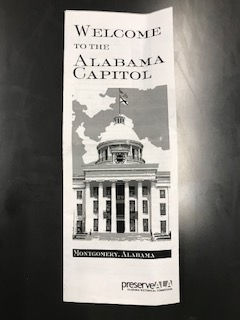
As we made our way towards the building, we made a very unusual observation. There were dozens of State Troopers all throughout the capitol grounds, but no visible signs of crime or disturbance. Upon our arrival at the external grand staircase, one of the troopers informed us the main entrance to the capitol was closed, and directed us to the visitor entrance on the side of the building. We walked through the visitor’s entrance and were greeted by 10 additional Alabama State Troopers. This was the most heavily guarded capitol building we had encountered on our cross country journey. Although we never felt in danger during the time we spent in Montgomery, perhaps a lot of crime occurs in the capitol? However, the heavy police presence seemed a tad over the top, and made us not feel very welcomed as visitors who are considering moving to Alabama. After passing through metal detectors, being scanned with a security wand, and patted down, we finally were granted access to the capitol building. The Alabama State Trooper who had just thoroughly searched us shared there were no guided tours of the capitol. We were handed a fourfold self-guided tour brochure, and sent off to explore the statehouse without further explanation.

We quickly discovered the brochure we were handed was poorly designed, and very confusing to interpret. We walked into a room with an open door, which appeared to be a very nicely restored committee room. As soon as we entered, we were approached by a State Trooper, who authoritatively said, “YOU ARE NOT ALLOWED IN HERE, THIS IS THE DARK GRAY ZONE!”. As we were being escorted out of the room, I asked the Trooper, “What is the dark gray zone?”. He showed us the map of the statehouse on our brochure where each room in the building was color coded in 3 colors. Dark gray rooms signify no public access, light gray are state offices which are not open to touring, and the white rooms are open to the public. It would have been greatly appreciated if this was explained to us when we entered the statehouse, as it would have spared us the public embarrassment of being thrown out of the “DARK GRAY ZONE”.
While the color coded map may have seemed to be evident of where we could and could not venture, in actuality it wasn’t quite that simple. Corridors, doorways and stairwells were unexpectedly roped off with no explanation of how to get to points of interest on the other side without crossing into the dreaded “GRAY ZONE”. Instead of exploring the statehouse and learning about our potential home state of Alabama, we spend the majority of our time trying the navigate the “White Zone”. Step one foot out of the “White Zone”, and a state trooper was there to put you back into place. Compounding our frustration, the Governor's Suite, the Original Governor's Suite, and the Original Secretary of State's Suite described in great detail on our brochure were located in the “GRAY ZONE” Why even bother describing fascinating historic rooms in your brochure, if they are not accessible to the public? The Alabama Statehouse was the least friendly and least welcoming capitol we have visited on our cross country trip.
In addition, we soon learned the Supreme Court had moved out in 1940, and in its place were a series of peculiar displays about Alabama. These appeared misplaced in the building serving as home to the Government of Alabama. Please see the pictures below.
In addition, the Senate and House had moved out in 1985, and both chambers had been restored to their 1861 appearance. The most historic room in the capitol was the Alabama Senate Chamber. It was in this very room in 1861 Southern delegates from the seceded Southern States formed Confederate State of America. Each chamber featured a very unique and ornate curved cast iron balcony and the railings were quite beautiful. Aside from random government offices, the statehouse appeared to be primarily a museum, and I believe a capitol building should serve as the head of state government. Nevertheless, the restoration performed on these two historic chambers was expertly executed, and were a privilege to witness. Please see the pictures below.
OLD HOUSE
OLD SENATE
After exiting the former legislative chambers, we visited the capitol's central room. The murals depicting the state’s rich history, the beautiful cast iron balconies and railings encircling the space, and the stained glass internal rotunda made this room the most stunning in the statehouse. Please see the pictures below.
Please see the additional pictures below of our visit to the Alabama Statehouse.
After departing the historic statehouse, we walked across the street to visit the actual Alabama Statehouse, and similar to its historic counterpart, state troopers were everywhere, and this building was also very difficult to navigate. After passing through security and a taking a series of wrong turns, we finally discovered the location of the Alabama Legislative Chambers. The House Gallery was on the 6th floor, and the Senate was on the 7th floor. Accessing the House Chamber was pretty straightforward, but accessing the gallery of the Senate Chamber required a trip on a separate tiny elevator up to the 8th floor. With dozens and dozens of cops throughout the capitol complex, I was shocked to discover neither the House nor the Senate were in session during our visit. Both legislative chambers were designed with functionality in mind, and were otherwise unremarkable. This was the first legislative chambers we have visited separated from the viewing gallery by a glass wall. This sends a poignant symbolic message of a separation between the people and their elected officials. Please see the pictures below
After departing the Alabama Statehouse, we drove 1 mile West across town to visit the Cross Country Couple's "Historic Location" for Alabama, “The Site of Rosa Park's Arrest” Known as the First Lady of Civil Rights, Rosa Parks is most famous for her role in the Montgomery Bus Boycott, which led to the Civil Rights Movement. On December 1, 1955 in Montgomery, Alabama, Parks refused bus driver James Blake’s demand for her to give up her seat in the "colored section" to a white passenger when the whites-only section was filled. According to Parks recollection of the day’s events:
"When that white driver stepped back towards us, he waved his hand and ordered us up and out of our seats, I felt a determination cover my body like a quilt on a winter night. I would have to know for once and for all what rights I had as a human being and a citizen."

When the bus driver asked, "Why don't you stand up?” Parks responded, "I don't think I should have to stand up.". The Bus Driver then called the police. Parks was arrested, removed from the bus, and charged with disorderly conduct, and violating Chapter 6, Section 11 segregation law of the Montgomery City Code. The next day Parks was found guilty, and fined $14. She appealed her conviction formally challenging the legality of racial segregation. Parks' arrest inspired the black community to boycott Montgomery buses. Three days after Parks' arrest, a one-day bus boycott was announced at black churches throughout Montgomery. Despite it raining the day of the boycott, over 40,000 Montgomery African Americans walked as far as 20 miles to work and school. After the success of the one-day boycott, a small group of local Montgomery African American leaders met later that evening to discuss strategies to continue the boycott. At the meeting they agreed the boycott would continue until; African American bus passengers were treated with respect and courtesy, black drivers were hired by the bus company, and bus seating was on a first come first serve basis anywhere on the bus. In addition, it was determined a single person should be the spokesperson for the boycott. A young and largely unknown minister of a Baptist church who had just recently moved to Montgomery was chosen to be the spokesperson. His name was Martin Luther King Jr. Under King’s leadership, financial war was waged on the cities bus company, and dozens of public buses stood idle for months. On November 13, 1956, the US Supreme Court ruled bus segregation was unconstitutional under the Fourteenth Amendment, and on December 20th 1956, Montgomery buses were desegregated ending the boycott. Despite walking long distances and great hardship for months on end, Montgomery’s black residents continued the boycott for 381 days.
Parks went on to become an international icon of resistance to racial segregation, and has been awarded; the NAACP's 1979 Spingarn Metal, The Presidential Medal of Freedom, the Congressional Gold Metal, and a statue depicting her likeness was erected in the United States Capitol's National Statuary Hall. Upon Parks' passing in 2005, she was the first woman in American history to lie in wake in the capitol's rotunda in Washington DC.
We had previously visited the actual bus in the Henry Ford Museum where Rosa Parks refused to give up her seat, which you can read about by clicking here. While Yellowstone was amazing, and the views from the top of the St. Louis Arch were breathtaking, sitting in the exact seat in the same bus where Rosa Parks once sat still ranks as my favorite experience of my cross country trip. To be able to tangibly connect with the very origin of the Civil Rights Movement was a moment which will be with me for the rest of my life. Today, I would have the opportunity to stand in the exact spot of Rosa Parks' arrest.
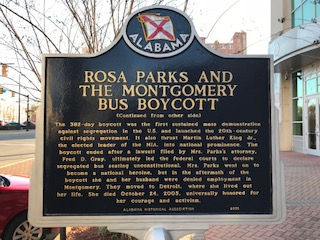
Aside from a small historic plaque, there is nothing present denoting the significance of what occurred here on December 1st, 1955. I stood in front of that plaque, closed my eyes, and tried imagine what was going through Park's mind while she was being led off that bus in handcuffs. I wonder what emotions she felt at that exact moment. Was she embarrassed and ashamed or was she determined and empowered? At that exact moment in time, I wonder if Rosa Parks could have imagined a single act of civil disobedience against an unjust law would be the catalyst of the Civil Rights Movement, and a constitutional amendment? What a brave and inspirational American!
Although America no longer has segregated buses and bathrooms, our nation still struggles with issues of equality even to this day. Cops shooting unarmed African Americans, transgendered Americans being denied military service, and the gender pay gap, all reveal our country still has a long way to grow. When faced with discrimination, may we all derive inspiration and resolve from those brave Americans who stood up to discrimination despite the cost or consequences. May we all embody the courage of Rosa Parks, and graciously accept imprisonment and public ridicule for violating unjust laws. May all Americans actions be forever guided by the immortal declaration of our founding father Thomas Jefferson, and reminded to us by Martin Luther King Jr. in the shadows of the Lincoln Monument; “We hold these truths to be self-evident that all men are created equal”.
Today is my birthday, and I am 37 years old. I am not very much in to parties, presents or hoopla, so to me it is just another day. However, birthdays are a big deal to Lori, and she insisted we celebrate. A quick google search revealed a local Caribbean restaurant with vegan options on the menu. After departing the site of Rosa Parks' arrest, we drove across town to Island Delight. I must admit I was quite intrigued as I have never had vegan Caribbean cuisine. I ordered the Vegan Curry Goat, Lori had the Vegan Fishless Filet, and both entrees were absolutely delicious, and very indicative of its meat counterparts. Not only was the food amazing, the ambiance was as colorful as the Caribbean, the service was spectacular and the prices were very reasonable. If I ever find myself anywhere in or around Montgomery, I would certainly come back to Island Delight. After departing my birthday dinner, we drove across town where we found a Walmart to spend the night. We finished the night off with 2 small slices of cheesecake and watched a movie from Redbox. Spending the day exploring the country I love with the woman I love made my 37th birthday the best birthday ever!




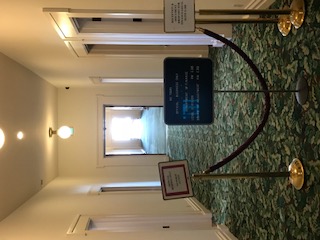





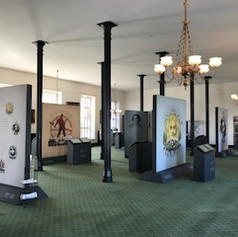











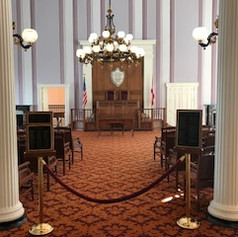

































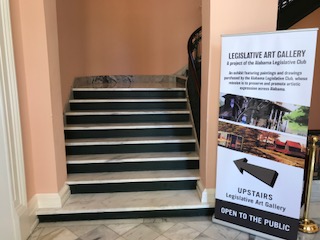

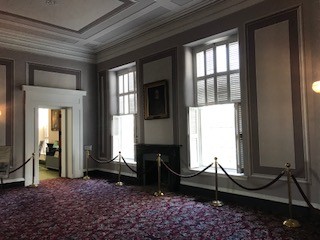
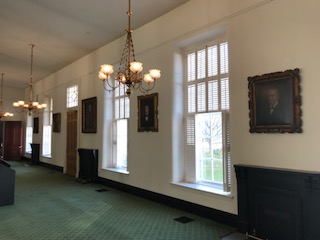


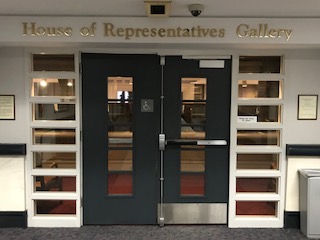
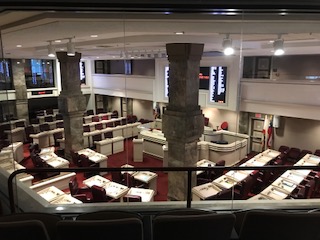



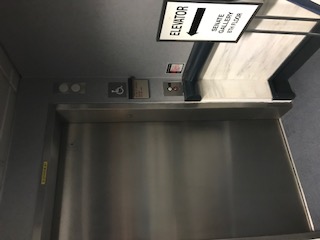


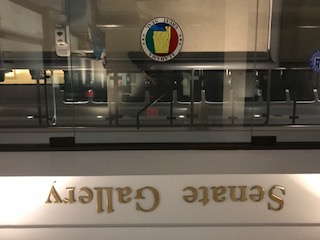

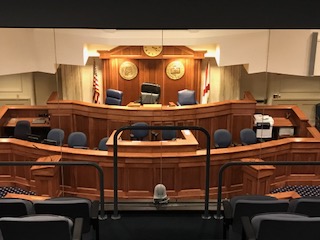











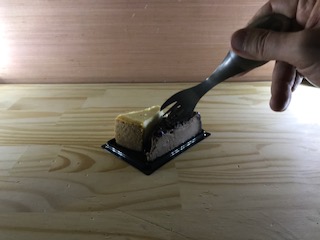
Comments